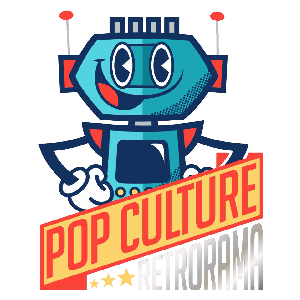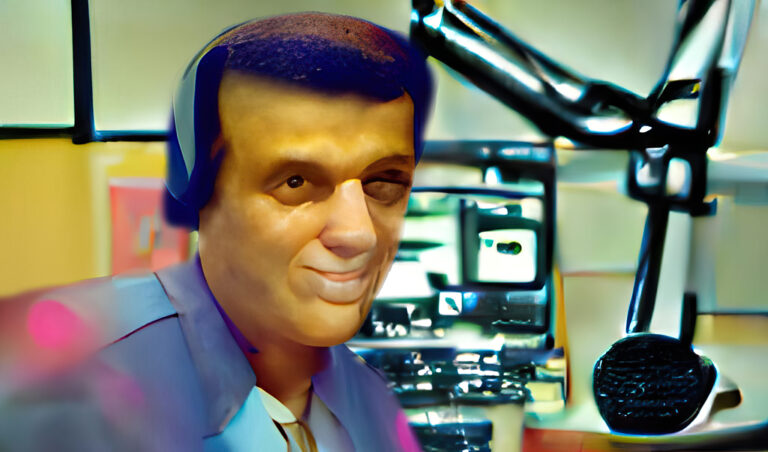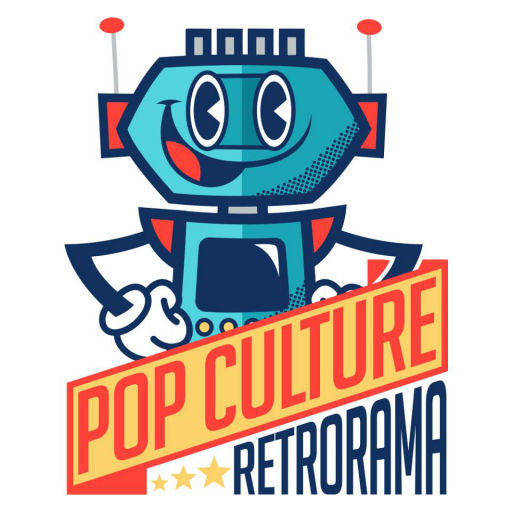On the surface, the original Japanese film Gojira, released on November 3rd, 1954, with the later heavily altered American version called Godzilla, King of Monsters!, is about a giant monster awaken from its slumber by American underwater hydrogen bomb testing in the South Pacific. The angry and confused giant monster (Kaiju) then unleashes its destructive force laying waste to Tokyo, Japan, and leaving the dead and injured in its wake. But, this is a simplistic way of looking at a masterpiece that is meant to be much more profound than “just a giant monster movie.”

Origins and Influences for 1954’s GOJIRA
Just nine years before Gojira was unleashed in Japanese theaters, the country lay in ruin after World War II. The atomic bombs containing Uranium and Plutonium dropped on Hiroshima and Nagasaki are estimated to have killed as many as 215 thousand people due to the explosions and long-term side effects of radiation. Not to mention on March 9th and 10th of 1945, the devastating B-29 fire-bombing raids over Tokyo, where 100 thousand Japanese lost their lives, and 1 million were left homeless.
It’s estimated that a little over 3 million Japanese lost their lives in this horrifying war.
Once surrendering, a humbled and humiliated Japan, with their war machine obliterated and their infrastructure now relegated to debris and dust, was asked by their Emperor to “endure the unendurable.” Emperor Hirohito was no longer considered a god, never publicly apologized, took responsibility, or suffered any punishment after leading his nation into war. He passed away on January 7th, 1989.
In late 1951, the American and Allied Occupation of Japan ended, and on April 28th, 1952, Japan was once again an independent country. From 1946-1954, Americans tested atomic bombs in the Bikini Atoll, Marshall Islands, and Micronesia costing taxpayers upwards of 54 million dollars. The world questioned whether the U.S. was entitled to be the sole owner of this terrible technology. Russia detonated their first H-bomb in August of 1953. The whole crew of the Lucky Dragon fishing boat who witnessed one of the bomb tests develop acute radiation sickness and are poisoned by the fish in the ocean. Over the next ten months, 457 tons of Tuna were confiscated and destroyed.
These events are the backdrop of 1954’s Gojira. Meant to sound like an air raid siren, Gojira’s roar is unmistakable and one of cinema’s most iconic and chilling sound effects. His booming footsteps are eerily similar to approaching bombs exploding in the distance and his furrowed skin and scales designed to resemble the keloid scars of survivors of the catastrophic bombs that befell Hiroshima and Nagasaki are nightmare- inducing. It was a time when creatives, artists, novelists, and filmmakers couldn’t speak about the tragedies they suffered less than a decade ago. There was a prevailing sense of guilt and shame that blanketed the whole island nation and former empire.
Watching Tokyo destroyed once again was almost cathartic for the Japanese moviegoer. The horrors of the atomic bombs and dangers of radiation had taken the form of a giant monster hellbent on destruction and death. But with total devastation seemingly imminent, to save themselves, the Japanese discharge a weapon called the Oxygen destroyer, which is even more destructive than the embodiment of their past atomic nightmares.
Audiences had been introduced to fantasy films with incredible creatures in movies like King Kong (1933), The Beast From 20,000 Fathoms (1953), Them! (1954) and Creature From The Black Lagoon (1954). But unlike those previous films where we feel like we’re merely spectators, Gojira throws us into a world of fire and brimstone and forces the ruination upon us. The film has a stark black and white documentary-style presentation, where we experience the extreme panic endured by the grief-stricken population and the tragic outcome of this incredible cataclysmic force awakened by man’s murderous accouterments of war. We witness the calamity and feel their anguish when seeing burn victims in hospitals. We also see women and children with sorrowful, afflicted stares of hopelessness, and even people “scattered like leaves” after Gojira lets loose radioactive fire upon them.
Gojira was not your usual B-movie fare, and indeed not a Saturday morning cartoon for the children. It was leagues away from the slapstick farce it would become during the next twenty years. But in 1954, it was the ultimate grim metaphor of the dreadful atomic bombs: crass and visionary. Director Ishiro Honda, Producer Tomoyuki Tanaka, and Special Effects Director Eiji Tsubaraya pressed the horrors of nuclear warfare once again into the still wounded Japanese psyche. Some people reportedly left the movie theaters sobbing; others certainly were pensive over what they had just undergone. With virtually no humor and begging to be taken seriously, Gojira has been the subject of study by many film scholars and fans alike. From 1954 to 2019, we’ve had 33 live-action films in the Godzilla franchise, with Godzilla vs. Kong slated for a 2021 release, but none like the original. None like Gojira. *I cannot comment on the 2016 Shin Godzilla as I have not had the opportunity to see it, though I’ve read that it is rather dark and brooding as well.

Godzilla Turns Campy
The terrifying embodiment of war and atomic weapons quickly became increasingly campy and aimed at a younger audience. The rushed 1955 sequel Godzilla Raids Again infuses some humor and is a much more light-hearted affair than the original Gojira, but still, not an all-out comedy either. But most of the Showa Era Godzilla films (1954-1975) focus on Godzilla becoming a savior of the Earth and a friend of the children, albeit not as evident as his Daiei studio rival Gamera became.

Throughout the mid-50s to the mid-70s, Godzilla battled other Kaiju brought to life by actors in suits made of various materials in a technique called suitmation, with the first suits being extraordinarily uncomfortable and burdensome. They used pro-wrestling-style moves amid playful, tongue-in-cheek rumbles good for a chuckle. Ridiculous attempts of humor and spotty acting became the norm, and thanks to a less than generous budget from Toho, stock footage became a necessity leading to shortcuts in production values. This is the Godzilla I grew up and loved as a child. But in the mid-80s, these movies were already 10 to 30 years old. Even to my young eyes, they hadn’t aged too well. But in December of 1985, my jaw dropped after a surprise rental from the video store.
Godzilla 1985- The Legend is Reborn
After many attempts throughout the Showa Era, Toho finally realized that they had alienated much of its adult audience. Their strategy to market Godzilla for children had not been entirely successful. The latest film entitled Terror of MechaGodzilla from 1975, was only the second film in the franchise to sell less than a million tickets during its theatrical run.
Godzilla (1984) was planned to be released only domestically in Japan. The film cost $6.25 million to make, but after reportedly earning a gross of roughly $6.8 million instead of the expected $12 million, Toho quickly changed their mind.
In the USA, Godzilla (1984) was renamed Godzilla 1985, but any attempt the Japanese version made to bring Godzilla back to its original 1954 Gojira roots was severely hampered by changes made to the American release.
Godzilla 1985 became a direct sequel to the original 1954 film and ignored all the other ones. They claimed that no corpse of Godzilla was found after using the Oxygen Destroyer on him. Umm… could it be because Godzilla was disintegrated? They were even bringing back actor Raymond Burr, the American news reporter who witnesses Godzilla’s rampage through Tokyo in Godzilla, King Of The Monsters!
After almost a decade, Godzilla was getting a refresh and a nearly complete reboot. It is speculated that Big G’s long hiatus was because producer Tomoyuki Tanaka was determined that any revival of the monster would be with first-class production values that would restore Godzilla’s lost luster amid the increasingly cheesy films that the franchise had degenerated into.
In an unprecedented turn of events, a young director named Steve Miner wanted to make the first-ever big-budget Americanization of Godzilla, using top-name actors and high-priced American SFX. In the 1990’s Miner later had success with movies like Forever Young starring Mel Gibson and My Father The Hero with Gerard Depardieu. Toho had nothing to lose and decided to give Miner their blessing to shop his idea and seek backing from American studios. He brought aboard screenwriter Fred Dekkar who had worked in the films Friday The 13th Part 2 and Friday The 13th Part 3-D. Production designer William Stout was also brought in as part of the team primarily because he was the illustrator of the acclaimed book The Dinosaurs published in 1981.
Believe it or not, the plan was for the movie to be in glorious 3-D with rumors of Warner Brothers almost committing to the needed financing. But plans fell through when most interested studios promised $10 million to back the film, but Miner believed that he needed at least $25 million to get the movie made. And so, Toho made Koji Hashimoto-who’d begun his career with Toho in the late 1960s and worked as the assistant director in more than 70 films- the new director. He’d also just finished work on the science fiction movie Sayonara Jupiter released December of 1983.
Godzilla (1984) surpassed Sayonara Jupiter as Toho’s most expensive genre production to date due in part to the making of an incredible 16-foot-high cable controlled robotzilla designed to perform a wide range of facial expressions and upper body movements not possible with suitmation and puppetry. Unfortunately, the $475,000 Godzilla Cybot as it was being called, with 3,000 computer-controlled mechanical parts, was inexplicably sparsely used in the actual movie.
Godzilla was passed on by the majors and instead picked up by New World Pictures, founded by on-the-cheap movie impresario Roger Corman. He sold the company in 1983, and under the new ownership, the studio was trying to move away from exploitation films and increased their production budgets to the $4 million to $7 million range. Corman usually completed his movies for around $1 million.
So for a measly $500,000, they obtained the rights to Godzilla (1984). The English language insert scenes cost roughly $200,00 and add $2.5 million for advertising and promotion.
At first, New World envisioned Godzilla 1985 as a comedy starring Leslie Nielson. They wanted to do the same as Woody Allen, who directed What’s Up, Tiger Lilly? from 1966. In this film, they bought a Japanese spy movie in the same vein as the James Bond films, overdubbed it, and thus changing the plot into the search for the world’s best egg salad recipe. Another more recent movie that did something similar was Kung Pow! Enter The Fist from 2002. The idea of Godzilla 1985 as a comedy was scraped after actor Raymond Burr’s representatives informed New World that Godzilla was no laughing matter to him. He took Godzilla as an anti-nuclear allegory very seriously. Yes, he indeed saved much of the movie, but much of the cheese still made it to the final cut.
In the end, critics heavily panned Godzilla 1985. New World’s shorter, campier version obscured much of Toho’s worthwhile but flawed attempt to bring back Godzilla to his harbinger of doom origins. It made $4.1 million at the box office, which can be considered modest in 1984, and pretty good for a studio like New World at the time. This amount doesn’t include later TV syndication, video rentals, or sales.
Video Provided by Dana Berg.
Fond Memories of Godzilla 1985
I have fantastic memories of this movie and don’t care about how imperfect or flawed so-called experts make out the film to be with spiteful comments such as “it’s barely a step above B movies schlock.” My mom surprised me by renting this movie from the video store after I’d finally gotten an ‘A’ in math in the second grade. The tape’s cover with the enormous Godzilla eclipsing a city caught my eye. I immediately grabbed some Cheetos, popped the movie into our not-so-trusty VHS player that had a penchant for eating our tapes, and plopped onto the couch.
My eyes widened, and my mouth was agape. The revamped Godzilla and modern SFX floored me. As already mentioned, even as a young child, I couldn’t get past the cheap-looking suit monsters that reminded me of the classic series Ultraman, which I also adored. Of course, I obsessively watched Godzilla movies whenever they were on the TV, but it wasn’t until Godzilla 1985 that I had my doubts that Godzilla was not a rubber-suited actor! He looked sturdier and not so wobbly and goofy like in his previous incarnations. With his menacing sneer, sharp fangs, and malevolent demeanor, Godzilla was a sight to behold. Even his roar returned to the primeval, low-pitched growl of the original 1954 Gojira, and his footsteps were once again loud and thundering. He was back to his great old self! It felt like I was watching a modern technicolor version of the original 1954 Gojira but much more imposing. He was now a towering 80 meters instead of the previous 50 seen in Gojira so that Tokyo’s skyline wouldn’t dwarf him. Compared to the previous Showa Era movies, this was like watching Godzilla in glorious HD. It was that amazing.
As a seven-year-old child, the acting seemed better, or at least more realistic to me than other Godzilla films. Even though some gawdawful one-liners seem to overrun the movie, and many of the clueless American actors probably have no business being in it, the film isn’t worse than your conventional ’80s flick. Yes, there are some infamous edits in the American version, like showing the Russians deliberately launching a nuclear missile and not by accident like in the original Japanese version and blatant Dr. Pepper product placement, which seems oddly out of place. Let’s also not forget the Godzilla Meets Bambi short seen before the feature presentation! But Raymond Burr’s atmospheric narration at the end is arguably worth the admission alone. His speech was written by him and not New World Pictures.
Godzilla 1985 is a movie that I’d wish I would’ve seen in theaters, and it’s a movie I’d recommend to you if you have any interest in genre or Godzilla films. Give it a try. I think you’ll find a lot you can enjoy in Godzilla (1984), The Return of Godzilla, and Godzilla 1985.
Thanks for reading! My other articles for Pop Culture Retrorama are here, and if you enjoy old school wrestling, you can read my work for Pro Wrestling Stories here.



What a great write up! Thank you. I’ve been slowing trying to build a Gozilla collection of movies and watch a lot of the ones I’ve missed over the years, this one included. After reading this I’ll have to look into up the priority on this one…